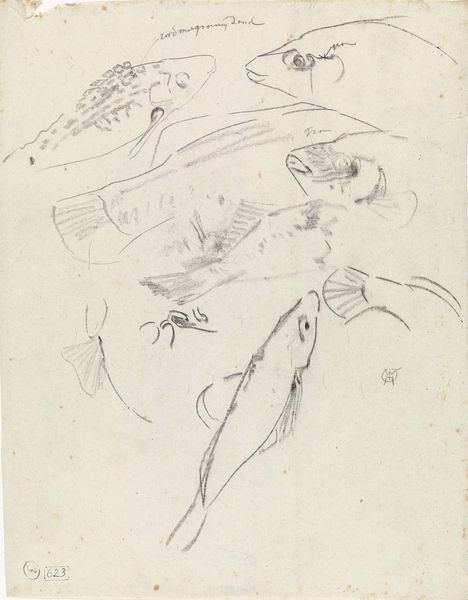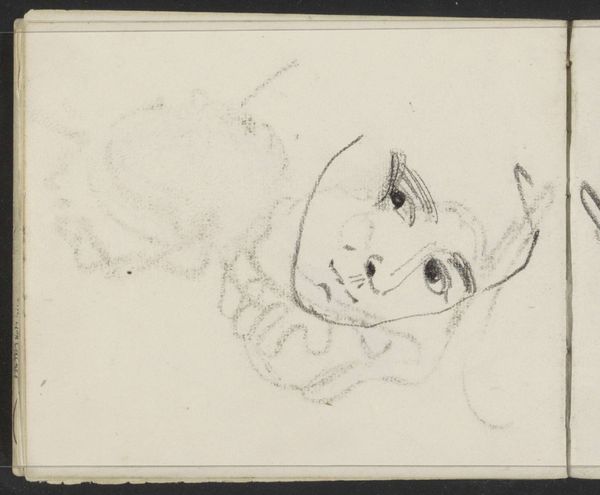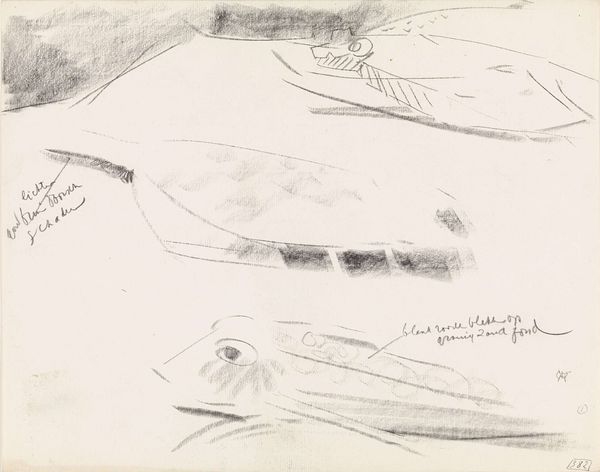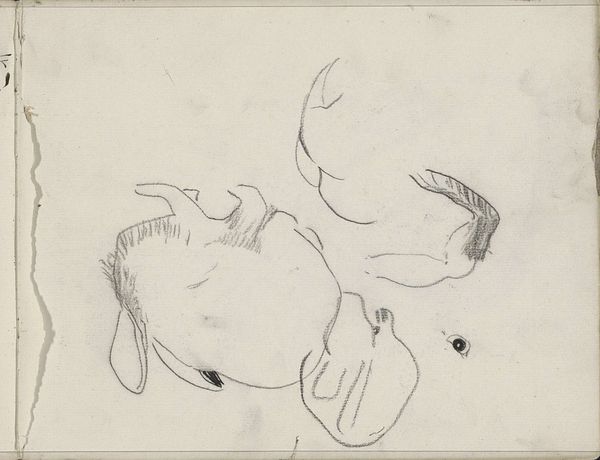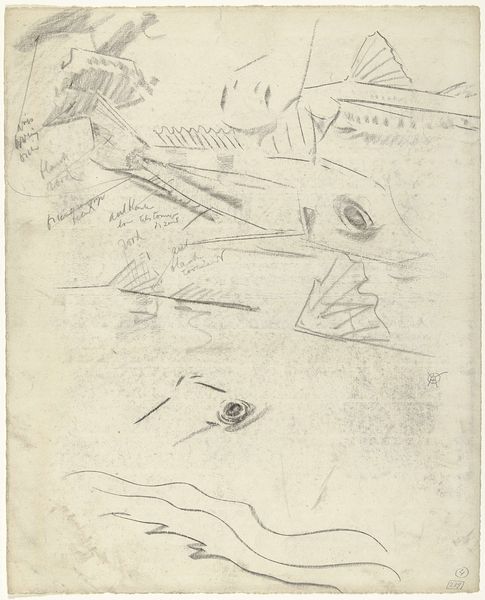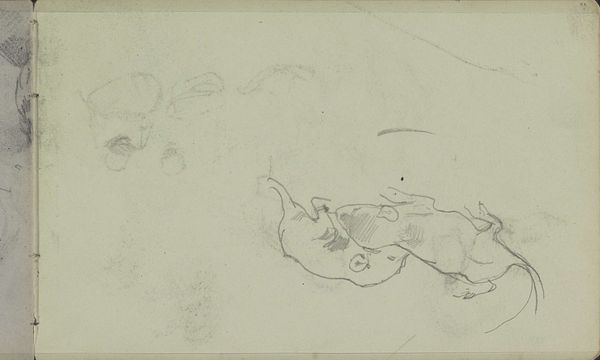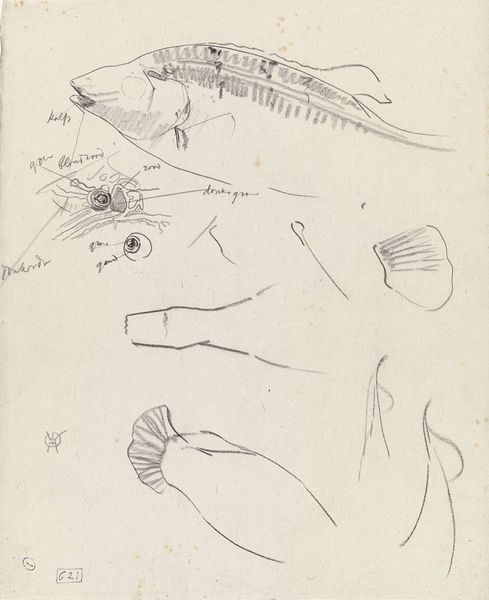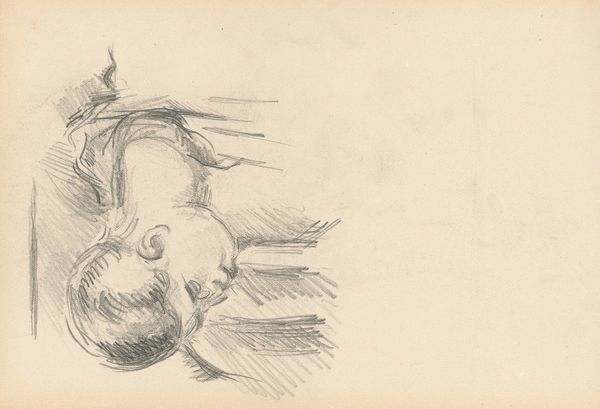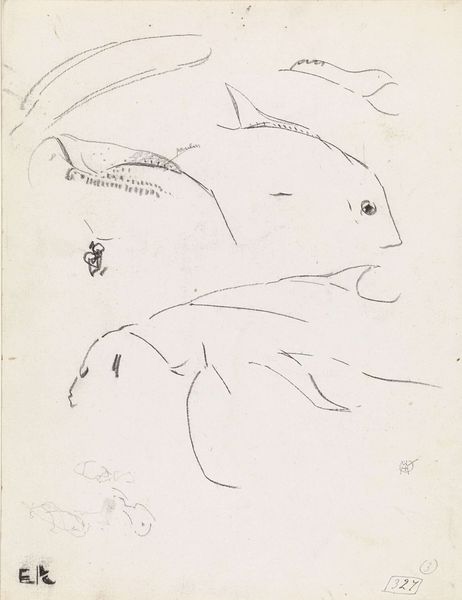
Kop van een sterlet en detailstudies van ogen, staart en vinnen 1876 - 1924
0:00
0:00
gerritwillemdijsselhof
Rijksmuseum
drawing, pencil
#
drawing
#
pen sketch
#
pencil sketch
#
sketch
#
pen-ink sketch
#
pencil
#
academic-art
#
realism
Dimensions: height 344 mm, width 420 mm
Copyright: Rijks Museum: Open Domain
Curator: My first impression is of an artist deeply engrossed in understanding the anatomy of this creature. It feels both scientific and intensely curious. Editor: Indeed! What you're observing is "Head of a Sterlet with Detail Studies of Eyes, Tail and Fins" by Gerrit Willem Dijsselhof, likely created between 1876 and 1924. It’s currently housed here at the Rijksmuseum. The drawing consists of graphite and black chalk on paper. Curator: Graphite and chalk allow for that range of subtle grays – look at the shading around the gills and fins. This level of detail implies Dijsselhof had close, sustained access to the fish, perhaps even kept it for study. This tells me about the production: the access, resources, the availability of this animal for his craft. Was the sterlet readily available? Was it being eaten? Sold? This contextualizes his work in terms of class, labor, consumption. Editor: That's a crucial perspective. The sterlet, a type of sturgeon, was indeed a prized catch. It represents a luxury food item, historically enjoyed by the wealthy elite in Europe. Dijsselhof capturing it, therefore, becomes significant beyond just anatomical study; he's documenting an element tied to power structures and class distinctions. What are the implications, both artistically and politically, of capturing an animal in this way, particularly one linked to status and exclusivity? Curator: Well, you raise a valid point. Is he elevating the fish to high art status through rendering, or perhaps subtly critiquing consumer culture through dissection? He is showing how it can be exploited as a consumable. I think a critical focus needs to remain with his chosen media: pencil, graphite on paper is not costly, in other words, not a traditionally artistic form. Editor: And how can the very notion of 'academic art,' in the late 19th century, challenge this exclusive culture of 'high art', and whether this work opens, or simply reproduces social divisions? Perhaps this seemingly simple study opens more complex questions of representation, commodification and social positioning than meets the eye. Curator: It seems the convergence of nature, commerce, and art takes shape through the physical traces of the medium. Thank you! Editor: Absolutely! Viewing art in dialogue helps expose how artworks encapsulate various threads of social and economic life, hopefully encouraging people to explore these ideas beyond the gallery walls.
Comments
No comments
Be the first to comment and join the conversation on the ultimate creative platform.
